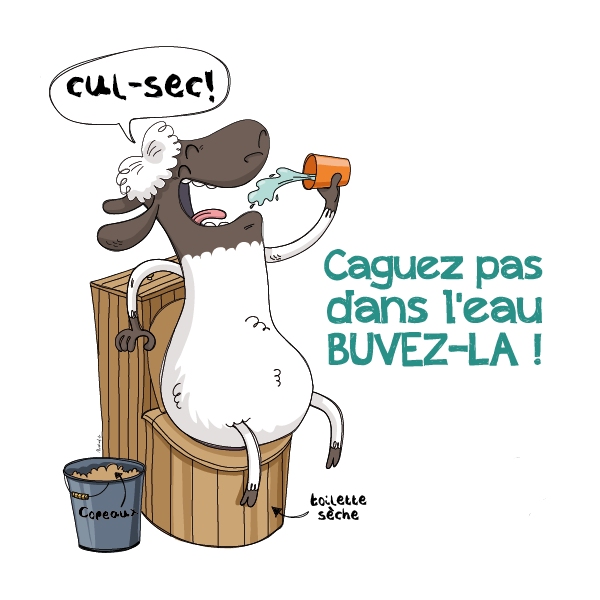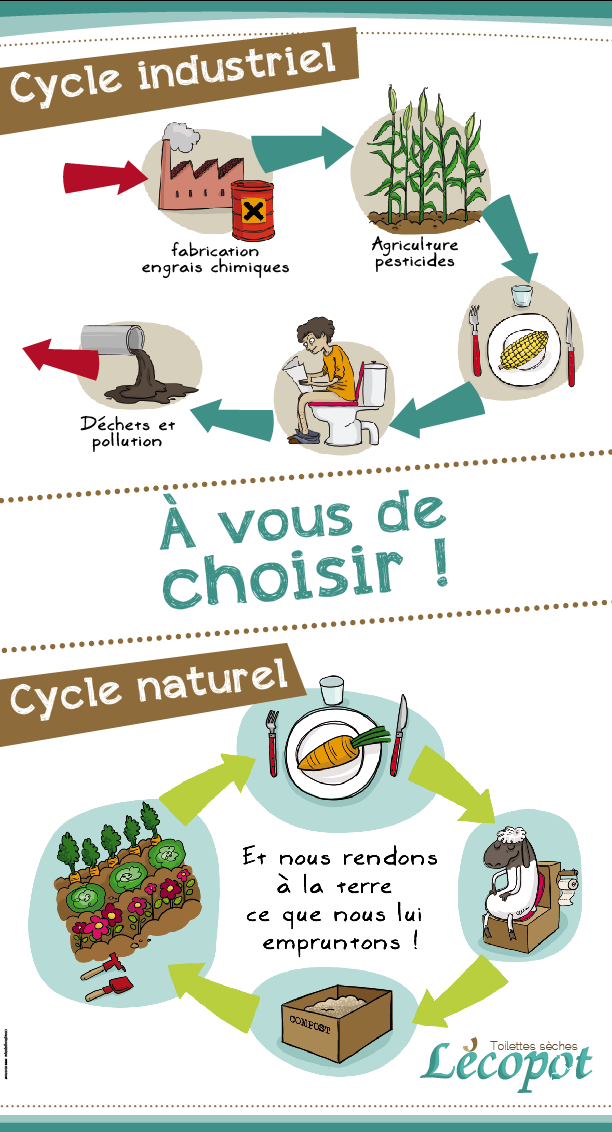Why use dry toilets?
Shortly after the appearance of the first flush toilets, some people already saw them as a complete aberration:
 The water “solution”, along with sewerage, will have to overcome considerable resistance. In France, at the end of the 19th century, debates raged between supporters of these new practices and those who rejected them. They point to the waste of water, the incredible pollution of the Seine, which continues to act as the main collector, and the loss of precious human fertilizer for farmland. So many reasons for opposition that, 120 years later, are still relevant today. (C. Élain, “Un petit coin pour soulager la planète”).
The water “solution”, along with sewerage, will have to overcome considerable resistance. In France, at the end of the 19th century, debates raged between supporters of these new practices and those who rejected them. They point to the waste of water, the incredible pollution of the Seine, which continues to act as the main collector, and the loss of precious human fertilizer for farmland. So many reasons for opposition that, 120 years later, are still relevant today. (C. Élain, “Un petit coin pour soulager la planète”).
And here we are, in the 21st century, the situation is alarming:
- The mineralization of nitrogen and phosphorus by wastewater treatment plants asphyxiates rivers through eutrophication. Sludge from these plants also pollutes groundwater reserves.
- Excessive consumption of these energy-guzzling stations (electricity, chemicals, etc.)
- Monumental waste of drinking water to evacuate our excrement (around 30% of our water consumption in the home).
- The loss of a rich material that is all too underestimated, leading to the irreparable degradation of our soils.
To improve the situation :
For all these reasons, adopting a Biolitter Toilet (BLT) means ensuring a truly sustainable future for our environment.
With this gesture, we regain our place in the cycle. Indeed, by composting our dejecta, we give back to the earth what we borrow from it. In this way, we are helping to breathe new life into our soils, which have been so badly damaged in recent decades.
Adopting a dry toilet also means taking responsibility for “your shit”, rather than hiding from reality by flushing the toilet to make this “filthy thing” disappear, with all the consequences mentioned above.
Human faecal biomass is far from being a “negligible quantity”. The nitrogen contained in mankind’s dejecta represents a mass equivalent to 40% of the nitrogen used in agriculture worldwide. In the terrestrial animal kingdom (large animals), human biomass ranks second after cattle and ahead of pigs. When it comes to sustainable management of the biosphere, the massive destruction of human dejecta under the pretext of purification is a form of collective suicide. In this sense, the very principle of sewage treatment, whatever the system used, is incompatible with the concept of sustainable development…
…In short, we have to admit once and for all that our dejecta are not waste to be disposed of, but an integral part of the ecosystem that sustains us. Our food comes from the earth, and our dejecta must return to it, but following a process that we need to be aware of to avoid making irreparable mistakes. This extract is taken from the eautarcie website, which can be viewed in full by clicking here (highly recommended).
